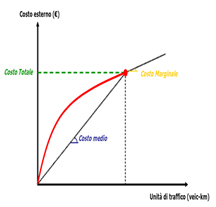The external cost of urban mobility
Abstract
Transportation system costs are generally classified in three main groups: the service production costs, the user costs and the external costs. The service production costs are borne by public bodies, enterprises or local authorities as regards the maintenance and construction of infrastructures, and by transit companies as regards the purchase and maintenance of transit vehicles and as regards the management of transit systems. The costs borne by users are mainly private car purchasing, maintenance costs, fuel, highway fares, transit fares, parking fares, etc. The external costs, instead, even if are produced by running and use of transportation systems, are borne by the whole community; indeed, also who does not use the transportation system bears these costs. The external costs usually considered are sometime called social costs, since they impact on the society and represent the externalities of the mobility. The main externalities of mobility are due to greenhouse gas emissions, air pollution, noise, accidents and congestion. Some of these externalities, as air pollution, noise and congestion, produce a sensible reduction of quality of life in urban areas, while the other ones generate high social impacts (accidents) and long-time effects on climate (greenhouse gas emissions). In the literature several studies can be found about the evaluation of external costs. In this paper, after a literature review, some results about the estimation of main external costs in Europe are summarised and discussed.Downloads

Copyright (c) 2014 Tema. Journal of Land Use, Mobility and Environment

This work is licensed under a Creative Commons Attribution 4.0 International License.
Authors who publish in this journal agree to the following:
1. Authors retain the rights to their work and give in to the journal the right of first publication of the work simultaneously licensed under a Creative Commons License - Attribution that allows others to share the work indicating the authorship and the initial publication in this journal.
2. Authors can adhere to other agreements of non-exclusive license for the distribution of the published version of the work (ex. To deposit it in an institutional repository or to publish it in a monography), provided to indicate that the document was first published in this journal.
3. Authors can distribute their work online (ex. In institutional repositories or in their website) prior to and during the submission process, as it can lead to productive exchanges and it can increase the quotations of the published work (See The Effect of Open Access)
